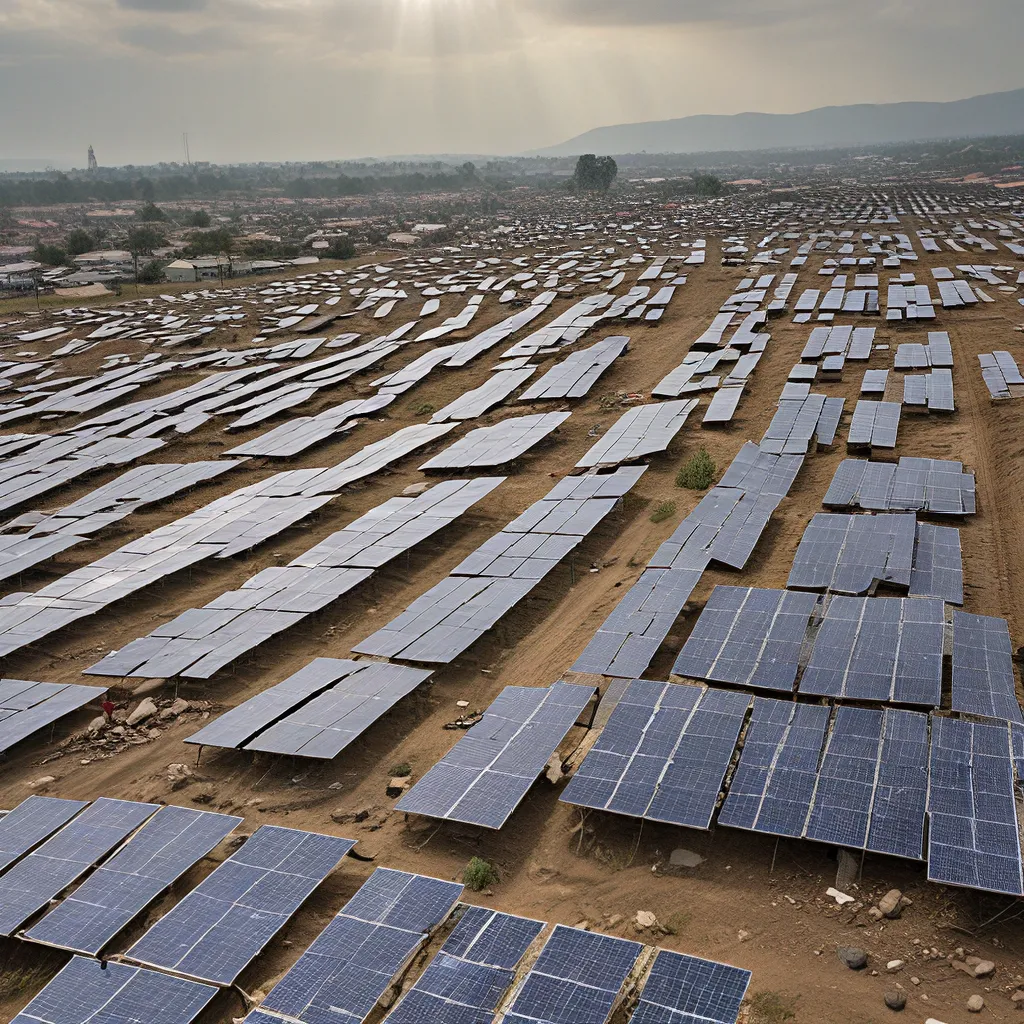
The Power of the Sun: A Beacon in the Darkest Hours
Picture this: You’re in the midst of a raging storm, the howling winds and lashing rain cutting off power to your community. Darkness envelops the streets, and the eerie silence is broken only by the desperate cries for help. But then, a glimmer of hope emerges – the soft glow of solar panels, steadily providing a lifeline of energy in the chaos.
This is the power of solar-powered resilience, a shining solution that can ensure energy security even during the most intense natural disasters. As the world grapples with the increasing frequency and severity of extreme weather events, the importance of harnessing renewable energy sources like solar power has never been more paramount.
Microgrids: The Decentralized Saviors
At the heart of this solar-powered resilience are microgrids – localized energy systems that can operate independently of the traditional grid. These sophisticated, dynamic networks possess the remarkable ability to seamlessly transition between grid-connected and island modes, ensuring a constant, reliable flow of power even when the main grid is down.
Microgrids are the unsung heroes in our quest for energy security. By integrating a diverse array of renewable energy sources, including solar, wind, and even fuel cells, they create a resilient and sustainable energy ecosystem. Microgrids can operate indefinitely in island mode, maintaining critical services and infrastructure during the most trying natural disasters.
The Resilience Equation: Solar + Microgrids
The synergy between solar power and microgrids is where the magic happens. Solar panels, with their ability to harness the sun’s abundant energy, become the beating heart of these decentralized power systems. When the grid falters, solar-powered microgrids step in, ensuring a consistent, emissions-free supply of electricity for hospitals, emergency shelters, and communication hubs.
Imagine this scenario: A devastating hurricane sweeps through a coastal town, leaving behind a trail of destruction. The traditional power grid lies in shambles, but the community’s solar-powered microgrid remains steadfast, powering essential services and providing a lifeline to the affected residents. Hospitals continue to operate, water treatment facilities maintain clean water supply, and emergency responders stay connected, all thanks to the resilience of this solar-driven system.
Overcoming the Challenges: Paving the Way for a Brighter Future
Of course, the path to widespread solar-powered resilience is not without its obstacles. Implementing these advanced systems requires navigating complex regulatory frameworks, securing adequate funding, and overcoming technical hurdles. But the potential benefits far outweigh the challenges.
Researchers at the National Renewable Energy Laboratory have been at the forefront of exploring innovative solutions to these challenges. From developing cutting-edge control systems to streamlining the integration of renewable energy sources, their work is paving the way for a future where solar-powered microgrids are the norm, not the exception.
The Broader Impact: Sustainability, Resilience, and Community Empowerment
The implications of solar-powered resilience extend far beyond just energy security. These systems also play a pivotal role in addressing the broader challenges of sustainability, climate change, and community empowerment.
By reducing our reliance on fossil fuels and embracing renewable energy, solar-powered microgrids contribute to the global effort to mitigate greenhouse gas emissions and combat the devastating effects of climate change. And when disaster strikes, these resilient systems ensure that vulnerable communities have access to the critical resources they need to weather the storm and bounce back stronger than ever.
Solar power empowers communities by providing a reliable and independent source of electricity, enabling access to essential services like healthcare, education, and economic opportunities. This self-sufficiency fosters a sense of community resilience, where neighbors can come together to support one another during times of crisis.
Embracing the Solar-Powered Future: A Brighter Path Forward
As we navigate the unpredictable landscape of natural disasters, the importance of solar-powered resilience shines brighter than ever. By embracing this innovative approach to energy security, we can not only protect our communities but also pave the way for a more sustainable and resilient future.
Imagine a world where the lights never go out, even in the face of the fiercest storms. A world where hospitals, schools, and essential services continue to operate seamlessly, no matter what Mother Nature throws our way. This is the promise of solar-powered resilience, and it’s a future we can – and must – strive for.
So, let’s not wait for the next disaster to strike. Let’s take action today, investing in the power of the sun and the ingenuity of microgrids to create a world where energy security is as resilient as the communities it serves. The future is bright, and it’s powered by the sun.